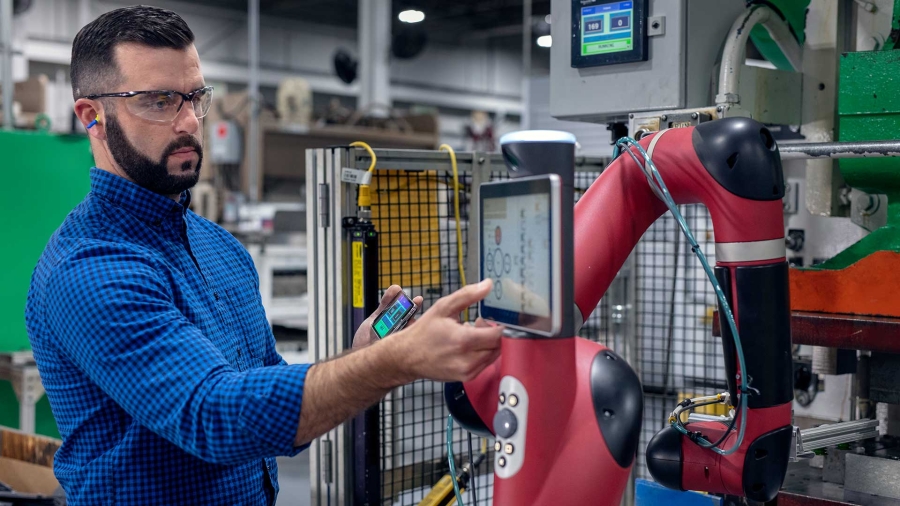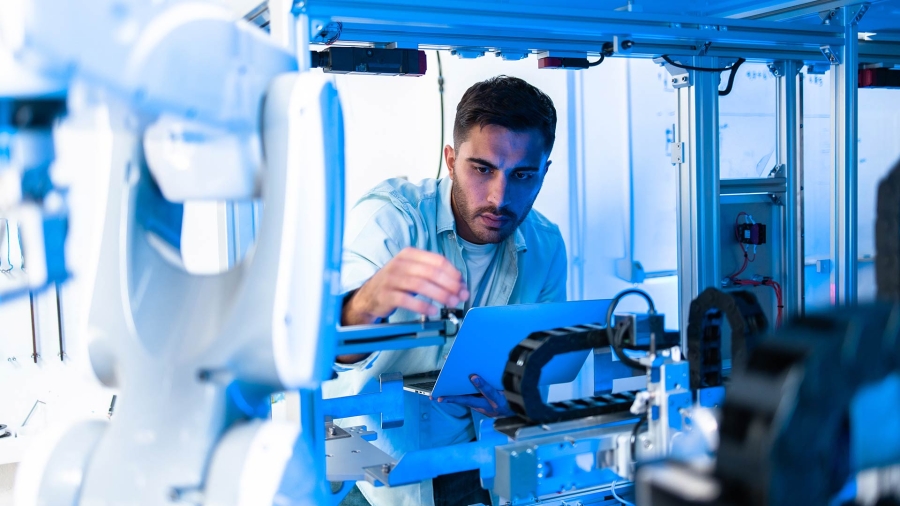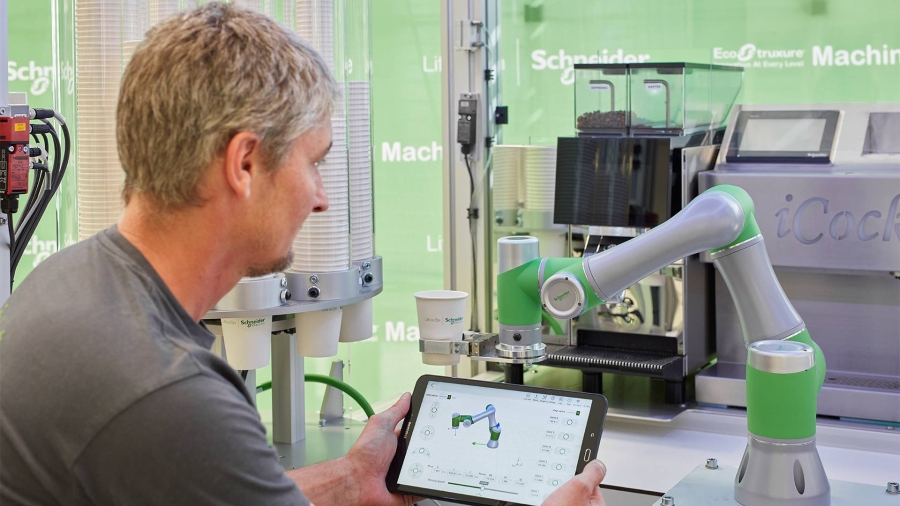With advanced manufacturing set to grow, how can we develop smart factories in Asia?
The “rise of the robot” has been a fear factor cited by futurologists and sci-fi movie-makers for decades. Hyper-intelligent machines won’t just take millions of our jobs; no, ultimately, they will turn on their creators.
In the real world, however – especially one in which collectively we have had something to genuinely fear over the past year – it is fact not fiction that matters. And the reality is that the robot – or rather the “cobot” – will be critical to the post-Covid mantra of “build back better”.
The cobot – collaborative robot – is playing an increasingly crucial role in the Industry 4.0 technologies that will allow Asian manufacturers the opportunity to bounce back and capture a larger share of global manufacturing activity.
The International Federation of Robotics (IFR), reports that Thailand had the highest number of industrial robots within the 10-member Association of Southeast Asian Nations (Asean) in 2019, with roughly 3,000 units in operation accounting for almost 1 per cent of the total 373,000 industrial robots installed globally.
With 45 industrial robots for every 10,000 employees in 2019, Thailand is the second largest market for robotics and automation in Asean after Singapore. Across Asia, the average number of industrial robots per 10,000 employees was 63.
The future of industries and factories will see increased collaboration between humans and automation, and cobot applications that contrast with traditional industrial robot applications in which robots are isolated from human contact. In the past, robots have been used for “heavy lifting” where there is a high frequency and heavy load. Now we work directly with more intelligent and agile “artificial colleagues” in gleaning and sharing data that drives productivity, quality and safety.
Industrial automation empowers people to make better, data-based decisions at every level – from the operator to the plant manager – and everywhere at every moment. It supports training, enables remote oversights and management of operations, and also de-facto promotes people from ‘operators’ to line ‘supervisors’ – giving employees more opportunities for growth.
Critically, as we have experienced during the pandemic, technology also can keep production lines open when people cannot be at work. Governments around the world have made huge efforts to battle the economic consequences of the virus, introducing some of the greatest stimulus packages ever seen, but if we are to build long-term industrial resilience, it must be through digitisation that addresses the two most important factors at any plant or manufacturing facility: maximising productivity and energy efficiency.
Asia is already recognised as the manufacturing hub of the world and a strong driving force for the Industrial Internet of Things (IIoT) market. Southeast Asia has the potential to leapfrog other developing nations thanks to strong support from the region’s governments in ramping up sustainable manufacturing capabilities, mass digitisation across sectors, and increased interconnectivity among numerous technologies.
Asia Pacific manufacturing companies are championing digitisation and end-to-end integration of their operations at a much faster rate than their peers in the Americas and EMEA, according to PwC. This gap will continue to widen, as 32 per cent of Asian companies plan to have established mature digital ecosystems by 2023, compared to 24 per cent in the Americas and 15 per cent in EMEA.
Examples of successful application of digitisation and cobots span the Southeast Asian region and its industries. In Singapore, Sanwa’s 580 sqm model factory area for its automotive components line has integrated solutions proposed by Schneider Electric and other industry partners which have fully automated its production cells allowing a single worker to oversee multiple cells. Sanwa is training this freed-up manpower for more valuable positions and the energy savings created by machine level monitoring has translated into cost reductions for customers. Sanwa plans to replicate this model factory setup at other production facilities in Singapore and then carry the model to factories in Indonesia, China and India.
At Schneider Electric’s Smart Factory in Batam, Indonesia, information technology and operational technology (IT/OT) converge creating digital tools like planning and scheduling management which has produced a 40 per cent improvement in on-time delivery. The factory has since reported a 44 per cent reduction in machine downtime in one year and is designated as an Advanced 4th Industrial Revolution (4IR) Lighthouse by the World Economic Forum.
Experts agree that automation delivered through IoT technologies can breathe new life into traditional workflows and empowering people; and the numbers are telling:
- By 2030, the optimised production processes of the IIoT could add trillions to the global economy, according to Accenture
- Europe is operating at 12 per cent of its digital potential and the United States at 18 per cent according to McKinsey; and the McKinsey ”Digital India” report in 2019 estimates that the productivity unlocked by the digital economy could create 60-65 million jobs in India by 2025.
- Only 17 per cent of China’s industrial value add comes from digitisation, says the IMF “China’s Digital Economy” report, 2019
- Almost every factory loses 5-20 per cent of productivity due to downtime, the International Society of Automation has calculated
What we know is that early adopters of digitisation in the Fourth Industrial Revolution are seeing measurable benefits such as increased energy efficiency and quicker troubleshooting which is resulting in less downtime of their assets and a better return on capital expenditure.
The IIoT is a game-changer, transforming the way people are employed in industrial settings and the way businesses contribute to the betterment of society. People have been and will remain at the heart of the industries of the future. New technology is not there to replace humans – it will change the nature of the work they do to make jobs safer, more efficient and more fulfilling.
In smart factories you will not only see intelligent new technologies, that can sometimes even be self-learning, but you will see these new technologies working seamlessly with highly skilled operators to increase productivity and operate and manage the plant in real time. The human element in gathering, comparing, and analysing data is essential.
Digital transformation is about connectivity and collaboration. Connectivity between products, machines, and people and collaboration across the complete industrial value chain are the enabling factors.
It will happen organically when people are empowered with technology and experience the benefits first hand. We have found through our own digitisation journey that pilot phases, peer-to-peer learning, and cross-site collaboration have been most effective in ensuring the rapid adoption and appreciation of new technologies by our workforce.
Empowered employees make fast, informed decisions, boosting productivity and operational efficiency. Technology unchains workers from repetitive tasks so that they can bring more value with skills that can’t be done by a machine – like imagination, reasoning, judgement and improvisation.
At Schneider Electric, we encourage open and safe workspaces where people and robots have autonomy, collaborate on decisions and the actions needed to optimise their skills to accomplish a task. This balance is essential to creating new and innovative jobs and smarter manufacturing processes.
The key to widespread adoption of digitisation is going to be how companies manage the journey and train their people to step up and embrace the changes smart manufacturing brings to their day-to-day work. And how people learn to love and trust their cobots.
The writer is vice president of industrial automation at Schneider Electric East Asia & Japan.
This piece was first published in The Business Times on May 27, 2021.














